General Reports
Share
Tweet
Email
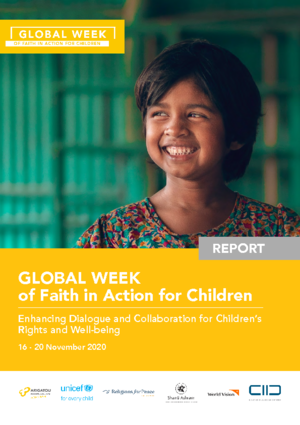
Arigatou International GLOBAL WEEK – Report
More than 1,700 children, youth, and adults from diverse cultural, ethnic, and religious backgrounds gathered at the GLOBAL WEEK of Faith in Action for Children, held online from 16 to 20 November 2020.
The GLOBAL WEEK was organized by Arigatou International, in collaboration with KAICIID Dialogue Center, Religions for Peace, Shanti Ashram, UNICEF and World Vision International; and with the support and participation of 64 global, regional, and local partners.
With 25 live sessions in five languages, the GLOBAL WEEK of Faith in Action for Children was a unique opportunity for children, youth, and representatives from different sectors of society to come together to propose joint actions and compelling responses to address the underlying issues that impact children’s well-being, and enhance their participation in matters that concern them, with particular focus on the impacts during and post COVID-19.
Arigatou International GLOBAL WEEK – Report
More than 1,700 children, youth, and adults from diverse cultural, ethnic, and religious backgrounds gathered at the GLOBAL WEEK of Faith in Action for Children, held online from 16 to 20 November 2020.
The GLOBAL WEEK was organized by Arigatou International, in collaboration with KAICIID Dialogue Center, Religions for Peace, Shanti Ashram, UNICEF and World Vision International; and with the support and participation of 64 global, regional, and local partners.
With 25 live sessions in five languages, the GLOBAL WEEK of Faith in Action for Children was a unique opportunity for children, youth, and representatives from different sectors of society to come together to propose joint actions and compelling responses to address the underlying issues that impact children’s well-being, and enhance their participation in matters that concern them, with particular focus on the impacts during and post COVID-19.
Arigatou International GLOBAL WEEK – Report
More than 1,700 children, youth, and adults from diverse cultural, ethnic, and religious backgrounds gathered at the GLOBAL WEEK of Faith in Action for Children, held online from 16 to 20 November 2020.
The GLOBAL WEEK was organized by Arigatou International, in collaboration with KAICIID Dialogue Center, Religions for Peace, Shanti Ashram, UNICEF and World Vision International; and with the support and participation of 64 global, regional, and local partners.
With 25 live sessions in five languages, the GLOBAL WEEK of Faith in Action for Children was a unique opportunity for children, youth, and representatives from different sectors of society to come together to propose joint actions and compelling responses to address the underlying issues that impact children’s well-being, and enhance their participation in matters that concern them, with particular focus on the impacts during and post COVID-19.

The Global Multidimensional Poverty Index (MPI) 2020 Report
The global MPI 2020 compares acute multidimensional poverty for 107 countries in developing regions. These countries are home to 5.9 billion people, three quarters of the world’s population. Of these people, 1.3 billion people (22%) are identified by the global MPI as multidimensionally poor.
More worrying is that half of these multidimensionally poor are children, meaning children still bear the biggest brunt of poverty.
Produced in partnership with the United Nations Development Program’s Human Development Report Office (UNDP HDRO), the global MPI 2020 provides a detailed image of who is poor and how they are poor. It offers both a global headline and a fine- grained analysis covering 1,279 subnational regions, and important groups such as children, and people living in urban or rural areas, together with the indicator deprivations of each group.
Goal 1 of the Sustainable Development Goals (SDGs) is to end poverty in all its forms and dimensions. The global MPI 2020 offers a tool to make progress towards this goal. linkages between the global MPI and other SDG indicators related to climate, work, immunization, higher education, and urban/rural areas bring together multiple perspectives on pressing issues in development.
The Global Multidimensional Poverty Index (MPI) 2020 Report
The global MPI 2020 compares acute multidimensional poverty for 107 countries in developing regions. These countries are home to 5.9 billion people, three quarters of the world’s population. Of these people, 1.3 billion people (22%) are identified by the global MPI as multidimensionally poor.
More worrying is that half of these multidimensionally poor are children, meaning children still bear the biggest brunt of poverty.
Produced in partnership with the United Nations Development Program’s Human Development Report Office (UNDP HDRO), the global MPI 2020 provides a detailed image of who is poor and how they are poor. It offers both a global headline and a fine- grained analysis covering 1,279 subnational regions, and important groups such as children, and people living in urban or rural areas, together with the indicator deprivations of each group.
Goal 1 of the Sustainable Development Goals (SDGs) is to end poverty in all its forms and dimensions. The global MPI 2020 offers a tool to make progress towards this goal. linkages between the global MPI and other SDG indicators related to climate, work, immunization, higher education, and urban/rural areas bring together multiple perspectives on pressing issues in development.
The Global Multidimensional Poverty Index (MPI) 2020 Report
The global MPI 2020 compares acute multidimensional poverty for 107 countries in developing regions. These countries are home to 5.9 billion people, three quarters of the world’s population. Of these people, 1.3 billion people (22%) are identified by the global MPI as multidimensionally poor.
More worrying is that half of these multidimensionally poor are children, meaning children still bear the biggest brunt of poverty.
Produced in partnership with the United Nations Development Program’s Human Development Report Office (UNDP HDRO), the global MPI 2020 provides a detailed image of who is poor and how they are poor. It offers both a global headline and a fine- grained analysis covering 1,279 subnational regions, and important groups such as children, and people living in urban or rural areas, together with the indicator deprivations of each group.
Goal 1 of the Sustainable Development Goals (SDGs) is to end poverty in all its forms and dimensions. The global MPI 2020 offers a tool to make progress towards this goal. linkages between the global MPI and other SDG indicators related to climate, work, immunization, higher education, and urban/rural areas bring together multiple perspectives on pressing issues in development.
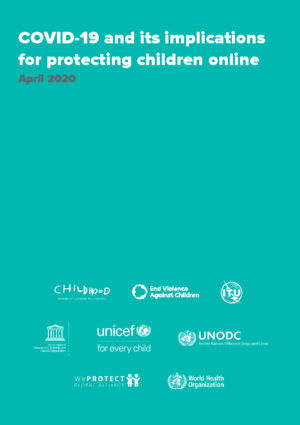
COVID-19 and its Implications for Protecting Children Online
As of April 2020, Covid-19 had led at least 188 country-wide school closures, impacting more than 90% of the world’s student population. Following these mass closures, many children’s learning experiences began being reshaped by the sudden introduction of remote learning, including – where available – technology and virtual platforms as a substitute for the classroom and schoolyard. Similarly, online games, social media and video chat programs are providing opportunities for children to connect with and play with their friends, parents and relatives while in isolation.
While increased online activity supports children’s learning, socialization and play, but also puts them at heightened risk. Such risks include online harms such as sexual exploitation and cyberbullying. Not all risks will translate into actual harm, but children facing other issues in their lives may be more vulnerable. For instance, it is widely well-established that cyberbullying is a major concern among teenagers and has wide-ranging, negative impacts. With many children suddenly experiencing extended periods of unstructured time online and grappling with mounting sources of stress, cyberbullying could proliferate.
COVID-19 and its Implications for Protecting Children Online
As of April 2020, Covid-19 had led at least 188 country-wide school closures, impacting more than 90% of the world’s student population. Following these mass closures, many children’s learning experiences began being reshaped by the sudden introduction of remote learning, including – where available – technology and virtual platforms as a substitute for the classroom and schoolyard. Similarly, online games, social media and video chat programs are providing opportunities for children to connect with and play with their friends, parents and relatives while in isolation.
While increased online activity supports children’s learning, socialization and play, but also puts them at heightened risk. Such risks include online harms such as sexual exploitation and cyberbullying. Not all risks will translate into actual harm, but children facing other issues in their lives may be more vulnerable. For instance, it is widely well-established that cyberbullying is a major concern among teenagers and has wide-ranging, negative impacts. With many children suddenly experiencing extended periods of unstructured time online and grappling with mounting sources of stress, cyberbullying could proliferate.
COVID-19 and its Implications for Protecting Children Online
As of April 2020, Covid-19 had led at least 188 country-wide school closures, impacting more than 90% of the world’s student population. Following these mass closures, many children’s learning experiences began being reshaped by the sudden introduction of remote learning, including – where available – technology and virtual platforms as a substitute for the classroom and schoolyard. Similarly, online games, social media and video chat programs are providing opportunities for children to connect with and play with their friends, parents and relatives while in isolation.
While increased online activity supports children’s learning, socialization and play, but also puts them at heightened risk. Such risks include online harms such as sexual exploitation and cyberbullying. Not all risks will translate into actual harm, but children facing other issues in their lives may be more vulnerable. For instance, it is widely well-established that cyberbullying is a major concern among teenagers and has wide-ranging, negative impacts. With many children suddenly experiencing extended periods of unstructured time online and grappling with mounting sources of stress, cyberbullying could proliferate.

Together we can end child poverty worldwide campaign report – 2019
The International Day for the Eradication of Poverty (IDEP) is a global day of awareness, advocacy and action against poverty; marked every 17 October. In 2019, IDEP took the theme: Acting Together to Empower Children, their Families and Communities to End Poverty. The theme was anchored on commemoration of the 30th Anniversary of the Convention on the Rights of the Child (CRC), which recognizes the right of every child to a standard of living adequate for the child’s physical, mental, spiritual, moral and social development.
At Arigatou International – End Child Poverty, IDEP often presents us an opportunity to engage a global campaign with a rallying call to come together to End Child Poverty. The campaign is dubbed: Together We Can End Child Poverty Worldwide. Perturbed by the current statistics, putting children as the most affected by poverty, we are therefore motivated to take part in IDEP, as well as mobilize others to mark it as a way to lift children out of poverty, thus change this sorry state of affairs. IDEP provides us a valiant opportunity to rally concerted and intensified efforts towards ending child poverty.
Together we can end child poverty worldwide campaign report – 2019
The International Day for the Eradication of Poverty (IDEP) is a global day of awareness, advocacy and action against poverty; marked every 17 October. In 2019, IDEP took the theme: Acting Together to Empower Children, their Families and Communities to End Poverty. The theme was anchored on commemoration of the 30th Anniversary of the Convention on the Rights of the Child (CRC), which recognizes the right of every child to a standard of living adequate for the child’s physical, mental, spiritual, moral and social development.
At Arigatou International – End Child Poverty, IDEP often presents us an opportunity to engage a global campaign with a rallying call to come together to End Child Poverty. The campaign is dubbed: Together We Can End Child Poverty Worldwide. Perturbed by the current statistics, putting children as the most affected by poverty, we are therefore motivated to take part in IDEP, as well as mobilize others to mark it as a way to lift children out of poverty, thus change this sorry state of affairs. IDEP provides us a valiant opportunity to rally concerted and intensified efforts towards ending child poverty.
Together we can end child poverty worldwide campaign report – 2019
The International Day for the Eradication of Poverty (IDEP) is a global day of awareness, advocacy and action against poverty; marked every 17 October. In 2019, IDEP took the theme: Acting Together to Empower Children, their Families and Communities to End Poverty. The theme was anchored on commemoration of the 30th Anniversary of the Convention on the Rights of the Child (CRC), which recognizes the right of every child to a standard of living adequate for the child’s physical, mental, spiritual, moral and social development.
At Arigatou International – End Child Poverty, IDEP often presents us an opportunity to engage a global campaign with a rallying call to come together to End Child Poverty. The campaign is dubbed: Together We Can End Child Poverty Worldwide. Perturbed by the current statistics, putting children as the most affected by poverty, we are therefore motivated to take part in IDEP, as well as mobilize others to mark it as a way to lift children out of poverty, thus change this sorry state of affairs. IDEP provides us a valiant opportunity to rally concerted and intensified efforts towards ending child poverty.
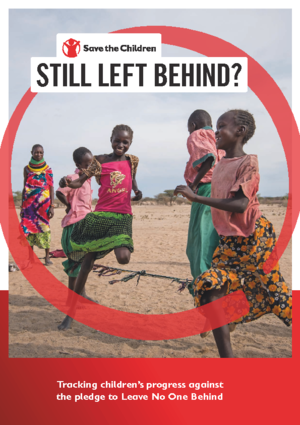
Leave No One Behind
The Leave No One Behind pledge lies at the heart of the SDG framework – a commitment ‘to reach the furthest behind first’ and ensure that targets are met for all segments of society. Monitoring and delivering on this promise is not just a matter of equity and fulfillment of fundamental children’s rights. It is also a condition for achieving the 2030 goals. Failure to narrow the gaps between the most marginalized children and the rest of society is acting as a brake on progress. To illustrate this globally, this report presents inequality trends for five key child poverty indicators – child mortality, malnutrition, child marriage, birth registration and primary education. Focusing on the Leave No One Behind pledge and what it could look like in practice. It proposes steps that could be taken by technical stakeholders involved in SDG monitoring and review processes.
Leave No One Behind
The Leave No One Behind pledge lies at the heart of the SDG framework – a commitment ‘to reach the furthest behind first’ and ensure that targets are met for all segments of society. Monitoring and delivering on this promise is not just a matter of equity and fulfillment of fundamental children’s rights. It is also a condition for achieving the 2030 goals. Failure to narrow the gaps between the most marginalized children and the rest of society is acting as a brake on progress. To illustrate this globally, this report presents inequality trends for five key child poverty indicators – child mortality, malnutrition, child marriage, birth registration and primary education. Focusing on the Leave No One Behind pledge and what it could look like in practice. It proposes steps that could be taken by technical stakeholders involved in SDG monitoring and review processes.
Leave No One Behind
The Leave No One Behind pledge lies at the heart of the SDG framework – a commitment ‘to reach the furthest behind first’ and ensure that targets are met for all segments of society. Monitoring and delivering on this promise is not just a matter of equity and fulfillment of fundamental children’s rights. It is also a condition for achieving the 2030 goals. Failure to narrow the gaps between the most marginalized children and the rest of society is acting as a brake on progress. To illustrate this globally, this report presents inequality trends for five key child poverty indicators – child mortality, malnutrition, child marriage, birth registration and primary education. Focusing on the Leave No One Behind pledge and what it could look like in practice. It proposes steps that could be taken by technical stakeholders involved in SDG monitoring and review processes.
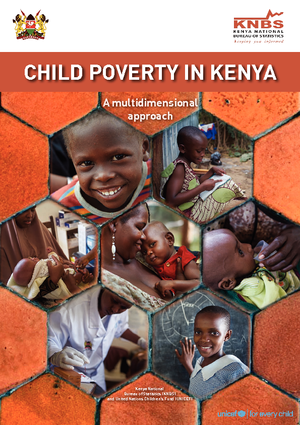
Child Poverty In Kenya – Multidimensional Approach Study Report
Child poverty distorts children’s physical, cognitive and social development. Poverty can also set children on a lifelong trajectory of low education levels and reduced productivity, and undermine their physical and mental health. Children living in poverty are more likely to become impoverished adults and have poor children, thereby creating and sustaining inter generational cycles of poverty.
The purpose of this report is to measure child poverty in Kenya in all its dimensions, recognizing that children can be deprived of more than one basic need or service simultaneously, and that children’s needs differ depending on their age. The report identifies the most vulnerable groups of children, points at the main factors of dimensional deprivation and multidimensional poverty, and identifies key bottlenecks in provision of basic services and main barriers to accessing them. This report provides baseline information and evidence useful for formulation of child sensitive policies, plans and budgets both at the county and national levels. In addition, the evidence generated in this report will be useful in subsequent monitoring of progress in the realization of child rights particularly as indicated in the SDG1 and SDG10.
Child Poverty In Kenya – Multidimensional Approach Study Report
Child poverty distorts children’s physical, cognitive and social development. Poverty can also set children on a lifelong trajectory of low education levels and reduced productivity, and undermine their physical and mental health. Children living in poverty are more likely to become impoverished adults and have poor children, thereby creating and sustaining inter generational cycles of poverty.
The purpose of this report is to measure child poverty in Kenya in all its dimensions, recognizing that children can be deprived of more than one basic need or service simultaneously, and that children’s needs differ depending on their age. The report identifies the most vulnerable groups of children, points at the main factors of dimensional deprivation and multidimensional poverty, and identifies key bottlenecks in provision of basic services and main barriers to accessing them. This report provides baseline information and evidence useful for formulation of child sensitive policies, plans and budgets both at the county and national levels. In addition, the evidence generated in this report will be useful in subsequent monitoring of progress in the realization of child rights particularly as indicated in the SDG1 and SDG10.
Child Poverty In Kenya – Multidimensional Approach Study Report
Child poverty distorts children’s physical, cognitive and social development. Poverty can also set children on a lifelong trajectory of low education levels and reduced productivity, and undermine their physical and mental health. Children living in poverty are more likely to become impoverished adults and have poor children, thereby creating and sustaining inter generational cycles of poverty.
The purpose of this report is to measure child poverty in Kenya in all its dimensions, recognizing that children can be deprived of more than one basic need or service simultaneously, and that children’s needs differ depending on their age. The report identifies the most vulnerable groups of children, points at the main factors of dimensional deprivation and multidimensional poverty, and identifies key bottlenecks in provision of basic services and main barriers to accessing them. This report provides baseline information and evidence useful for formulation of child sensitive policies, plans and budgets both at the county and national levels. In addition, the evidence generated in this report will be useful in subsequent monitoring of progress in the realization of child rights particularly as indicated in the SDG1 and SDG10.
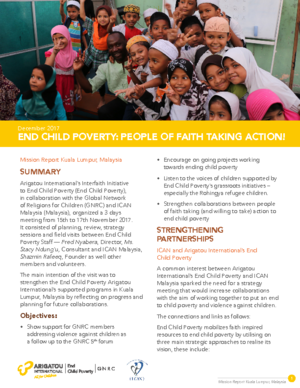
Mission Report Kuala Lumpur, Malaysia
A common interest between Arigatou International’s End Child Poverty and ICAN Malaysia sparked the need for a strategy meeting that would increase collaborations with the aim of working together to put an end to child poverty and violence against children. Arigatou International’s Interfaith Initiative to End Child Poverty (End Child Poverty),in collaboration with the Global Network of Religions for Children (GNRC) and ICAN Malaysia (Malaysia), organized a 3 days meeting from 15th to 17th November 2017.It consisted of planning, review, strategy sessions and field visits between End Child Poverty Staff — Fred Nyabera, Director, Ms. Stacy Ndung’u, Consultant and ICAN Malaysia, Shazmin Rafeeq, Founder as well other members and volunteers.
Mission Report Kuala Lumpur, Malaysia
A common interest between Arigatou International’s End Child Poverty and ICAN Malaysia sparked the need for a strategy meeting that would increase collaborations with the aim of working together to put an end to child poverty and violence against children. Arigatou International’s Interfaith Initiative to End Child Poverty (End Child Poverty),in collaboration with the Global Network of Religions for Children (GNRC) and ICAN Malaysia (Malaysia), organized a 3 days meeting from 15th to 17th November 2017.It consisted of planning, review, strategy sessions and field visits between End Child Poverty Staff — Fred Nyabera, Director, Ms. Stacy Ndung’u, Consultant and ICAN Malaysia, Shazmin Rafeeq, Founder as well other members and volunteers.
Mission Report Kuala Lumpur, Malaysia
A common interest between Arigatou International’s End Child Poverty and ICAN Malaysia sparked the need for a strategy meeting that would increase collaborations with the aim of working together to put an end to child poverty and violence against children. Arigatou International’s Interfaith Initiative to End Child Poverty (End Child Poverty),in collaboration with the Global Network of Religions for Children (GNRC) and ICAN Malaysia (Malaysia), organized a 3 days meeting from 15th to 17th November 2017.It consisted of planning, review, strategy sessions and field visits between End Child Poverty Staff — Fred Nyabera, Director, Ms. Stacy Ndung’u, Consultant and ICAN Malaysia, Shazmin Rafeeq, Founder as well other members and volunteers.
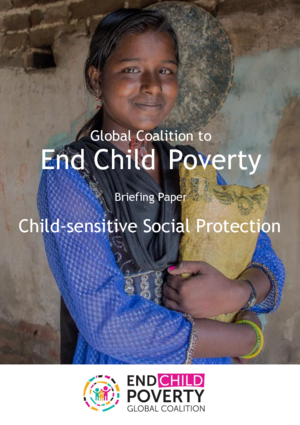
Coalition Child Sensitive Social Protection Briefing Paper
Social protection is a basic human right for children, enshrined in the Convention on the Rights of the Child (UNCRC Articles 26-27). Based on the Convention, children have the right to social security and an adequate standard of living, both of which can be guaranteed for children and families who live in poverty through publicly-funded social protection.
Social protection, overall, is now widely recognized as one of the foremost interventions as part of the policy package for fighting child poverty. Child-sensitive Social Protection (CSSP) is a well-proven approach within social protection to help realize the rights of children. CSSP helps families to cope with chronic poverty, stresses and shocks and enables them to invest on an adequate and continuing basis in their children’s well-being.
Coalition Child Sensitive Social Protection Briefing Paper
Social protection is a basic human right for children, enshrined in the Convention on the Rights of the Child (UNCRC Articles 26-27). Based on the Convention, children have the right to social security and an adequate standard of living, both of which can be guaranteed for children and families who live in poverty through publicly-funded social protection.
Social protection, overall, is now widely recognized as one of the foremost interventions as part of the policy package for fighting child poverty. Child-sensitive Social Protection (CSSP) is a well-proven approach within social protection to help realize the rights of children. CSSP helps families to cope with chronic poverty, stresses and shocks and enables them to invest on an adequate and continuing basis in their children’s well-being.
Coalition Child Sensitive Social Protection Briefing Paper
Social protection is a basic human right for children, enshrined in the Convention on the Rights of the Child (UNCRC Articles 26-27). Based on the Convention, children have the right to social security and an adequate standard of living, both of which can be guaranteed for children and families who live in poverty through publicly-funded social protection.
Social protection, overall, is now widely recognized as one of the foremost interventions as part of the policy package for fighting child poverty. Child-sensitive Social Protection (CSSP) is a well-proven approach within social protection to help realize the rights of children. CSSP helps families to cope with chronic poverty, stresses and shocks and enables them to invest on an adequate and continuing basis in their children’s well-being.
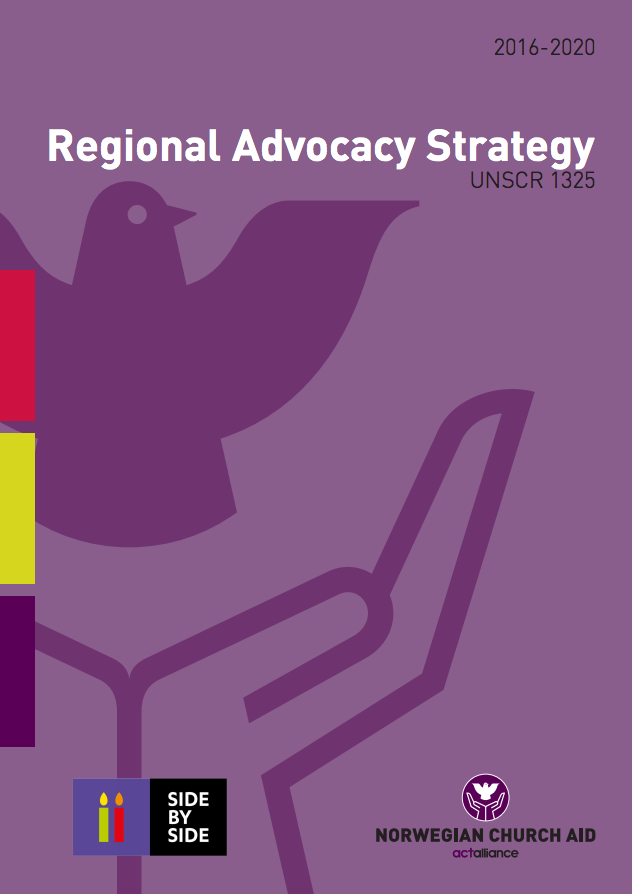
Regional Advocacy Strategy on United Nations Security Council Resolution 1325.
Regional Advocacy Strategy Paper
Regional Advocacy Strategy on United Nations Security Council Resolution 1325. This document provides guidance and defines the outcomes and outputs of a Regional Advocacy Strategy on United Nations Security Council Resolution 1325. The strategy was initiated jointly by two programs of Norwegian Church Aid, the Regional Peace Program and the Thematic Program on the Reduction of Gender-Based Violence in Conflict and Post-conflict Settings.
The strategy highlights the gaps in the implementation of United Nations Security Council Resolution 1325 in Africa, and the need for advocacy for policy changes and implementation to ensure women’s protection from gender-based violence and their increased participation in peace process in particular but also in general leadership and decision making structures.
Regional Advocacy Strategy on United Nations Security Council Resolution 1325.
Regional Advocacy Strategy Paper
Regional Advocacy Strategy on United Nations Security Council Resolution 1325. This document provides guidance and defines the outcomes and outputs of a Regional Advocacy Strategy on United Nations Security Council Resolution 1325. The strategy was initiated jointly by two programs of Norwegian Church Aid, the Regional Peace Program and the Thematic Program on the Reduction of Gender-Based Violence in Conflict and Post-conflict Settings.
The strategy highlights the gaps in the implementation of United Nations Security Council Resolution 1325 in Africa, and the need for advocacy for policy changes and implementation to ensure women’s protection from gender-based violence and their increased participation in peace process in particular but also in general leadership and decision making structures.
Regional Advocacy Strategy on United Nations Security Council Resolution 1325.
Regional Advocacy Strategy Paper
Regional Advocacy Strategy on United Nations Security Council Resolution 1325. This document provides guidance and defines the outcomes and outputs of a Regional Advocacy Strategy on United Nations Security Council Resolution 1325. The strategy was initiated jointly by two programs of Norwegian Church Aid, the Regional Peace Program and the Thematic Program on the Reduction of Gender-Based Violence in Conflict and Post-conflict Settings.
The strategy highlights the gaps in the implementation of United Nations Security Council Resolution 1325 in Africa, and the need for advocacy for policy changes and implementation to ensure women’s protection from gender-based violence and their increased participation in peace process in particular but also in general leadership and decision making structures.
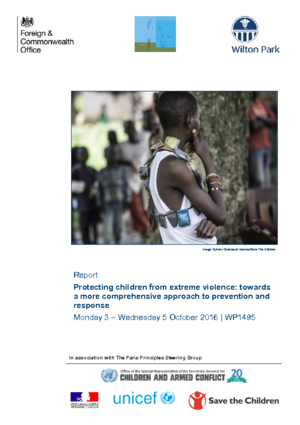
The Wilton Park Report
Whilst conflict impacts all involved on a cognitive, physiological and emotional level. It has particularly devastating effects on children’s acute vulnerability to conflict. Particularly to recruitment and use by parties of conflict is widely recognized and acknowledged. The Wilton Park think tank report seeks to address; a more comprehensive approach to prevention and response in protecting children from extreme violence and recruitment.
The Wilton Park Report
Whilst conflict impacts all involved on a cognitive, physiological and emotional level. It has particularly devastating effects on children’s acute vulnerability to conflict. Particularly to recruitment and use by parties of conflict is widely recognized and acknowledged. The Wilton Park think tank report seeks to address; a more comprehensive approach to prevention and response in protecting children from extreme violence and recruitment.
The Wilton Park Report
Whilst conflict impacts all involved on a cognitive, physiological and emotional level. It has particularly devastating effects on children’s acute vulnerability to conflict. Particularly to recruitment and use by parties of conflict is widely recognized and acknowledged. The Wilton Park think tank report seeks to address; a more comprehensive approach to prevention and response in protecting children from extreme violence and recruitment.
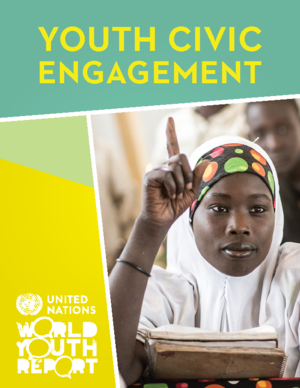
World Youth Report 2017
The transition from youth to adulthood marks a key period characterized by greater economic independence, political involvement, and participation in community life. Such engagement not only impacts the individual and community, but can act as an enabling force for young women and men’s involvement in the development and formulation of youth-related policies. The World Youth Report on Youth Civic engagement provides an interface between global policies in the economic, social and environmental spheres and national action engagement, as well as providing thematic insights on economic, political and community engagement, coupled with expert opinion pieces so as to provide robust and varied perspectives into youth engagement.
World Youth Report 2017
The transition from youth to adulthood marks a key period characterized by greater economic independence, political involvement, and participation in community life. Such engagement not only impacts the individual and community, but can act as an enabling force for young women and men’s involvement in the development and formulation of youth-related policies. The World Youth Report on Youth Civic engagement provides an interface between global policies in the economic, social and environmental spheres and national action engagement, as well as providing thematic insights on economic, political and community engagement, coupled with expert opinion pieces so as to provide robust and varied perspectives into youth engagement.
World Youth Report 2017
The transition from youth to adulthood marks a key period characterized by greater economic independence, political involvement, and participation in community life. Such engagement not only impacts the individual and community, but can act as an enabling force for young women and men’s involvement in the development and formulation of youth-related policies. The World Youth Report on Youth Civic engagement provides an interface between global policies in the economic, social and environmental spheres and national action engagement, as well as providing thematic insights on economic, political and community engagement, coupled with expert opinion pieces so as to provide robust and varied perspectives into youth engagement.

7(Seven) Strategies for Ending Violence Against Children
The 2030 Agenda for Sustainable Development contains a bold, ambitious and clear call to eliminate violence against children. This provides a unique opportunity to catalyse action that builds safe, stable and nurturing relationships and environments for every child. We all have the power and responsibility to act.
7(Seven) Strategies for Ending Violence Against Children
The 2030 Agenda for Sustainable Development contains a bold, ambitious and clear call to eliminate violence against children. This provides a unique opportunity to catalyse action that builds safe, stable and nurturing relationships and environments for every child. We all have the power and responsibility to act.
7(Seven) Strategies for Ending Violence Against Children
The 2030 Agenda for Sustainable Development contains a bold, ambitious and clear call to eliminate violence against children. This provides a unique opportunity to catalyse action that builds safe, stable and nurturing relationships and environments for every child. We all have the power and responsibility to act.
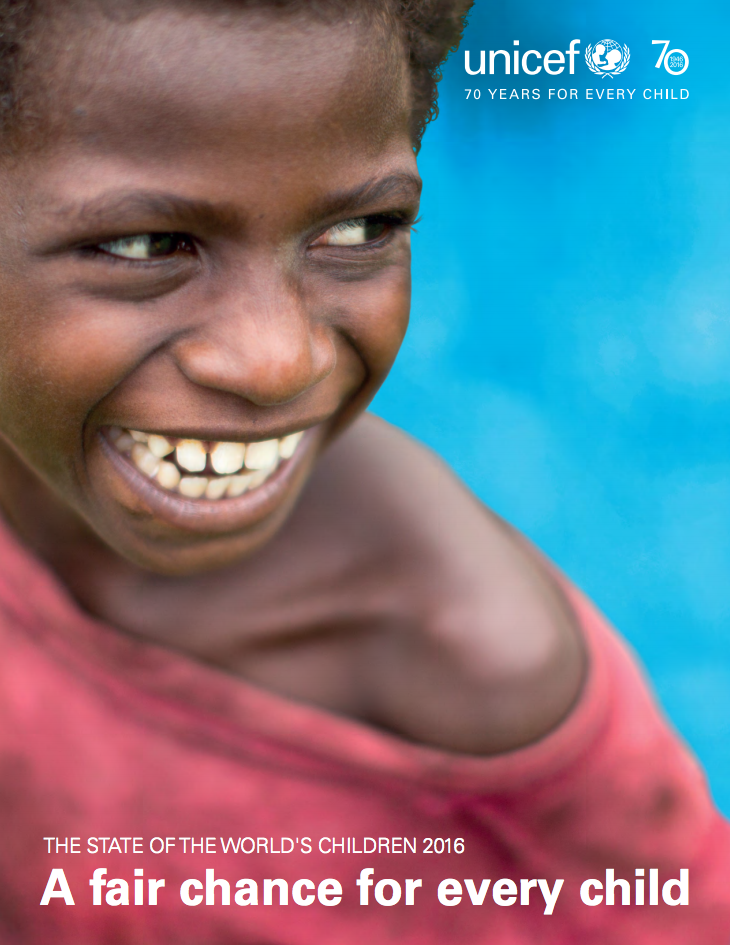
The State of the World’s Children 2016: A fair chance for every child
Every child has the right to health, education and protection, and every society has a stake in expanding children’s opportunities in life. Yet, around the world, millions of children are denied a fair chance for no reason other than the country, gender or circumstances into which they are born. The State of the World’s Children 2016 argues that progress for the most disadvantaged children is not only a moral, but also a strategic imperative. Stakeholders have a clear choice to make: invest in accelerated progress for the children being left behind, or face the consequences of a far more divided world by 2030. This UNICEF report concludes with a set of recommendations to help chart the course towards a more equitable world.
The State of the World’s Children 2016: A fair chance for every child
Every child has the right to health, education and protection, and every society has a stake in expanding children’s opportunities in life. Yet, around the world, millions of children are denied a fair chance for no reason other than the country, gender or circumstances into which they are born. The State of the World’s Children 2016 argues that progress for the most disadvantaged children is not only a moral, but also a strategic imperative. Stakeholders have a clear choice to make: invest in accelerated progress for the children being left behind, or face the consequences of a far more divided world by 2030. This UNICEF report concludes with a set of recommendations to help chart the course towards a more equitable world.
The State of the World’s Children 2016: A fair chance for every child
Every child has the right to health, education and protection, and every society has a stake in expanding children’s opportunities in life. Yet, around the world, millions of children are denied a fair chance for no reason other than the country, gender or circumstances into which they are born. The State of the World’s Children 2016 argues that progress for the most disadvantaged children is not only a moral, but also a strategic imperative. Stakeholders have a clear choice to make: invest in accelerated progress for the children being left behind, or face the consequences of a far more divided world by 2030. This UNICEF report concludes with a set of recommendations to help chart the course towards a more equitable world.
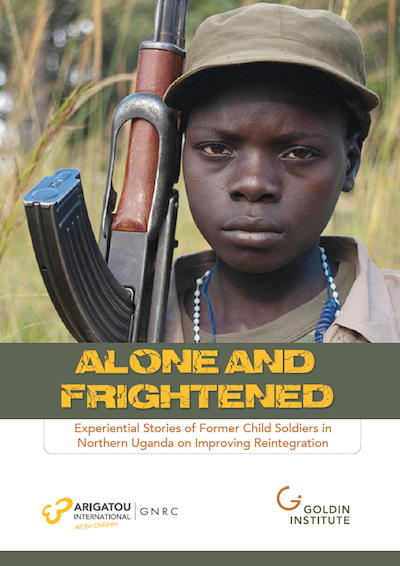
Alone and Frightened
Research Report on Child Soldiers
Even though we lose 30,000 fewer children each day than a half a century ago, we still are losing 20,000 children daily. The tragedy is that these deaths are largely preventable. The study Alone and Frightened: The Experiential Stories of FCS in Northern Uganda on Improving Reintegration in the Region is an important addition to the knowledge of the state of children in war and former zones and how they are coping, as well as what communities are doing to support them.
Even though we lose 30,000 fewer children each day than a half a century ago, we still are losing 20,000 children daily. The tragedy is that these deaths are largely preventable. The study Alone and Frightened: The Experiential Stories of FCS in Northern Uganda on Improving Reintegration in the Region is an important addition to the knowledge of the state of children in war and former zones and how they are coping, as well as what communities are doing to support them.
Even though we lose 30,000 fewer children each day than a half a century ago, we still are losing 20,000 children daily. The tragedy is that these deaths are largely preventable. The study Alone and Frightened: The Experiential Stories of FCS in Northern Uganda on Improving Reintegration in the Region is an important addition to the knowledge of the state of children in war and former zones and how they are coping, as well as what communities are doing to support them.
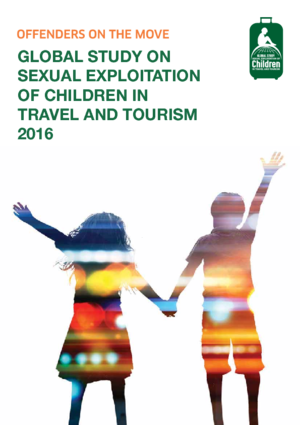
Offenders on the Move
Global Report on the Sexual Exploitation of Children in Travel and Tourism
Offenders on the Move
Global Report on the Sexual Exploitation of Children in Travel and Tourism
Offenders on the Move
Global Report on the Sexual Exploitation of Children in Travel and Tourism


